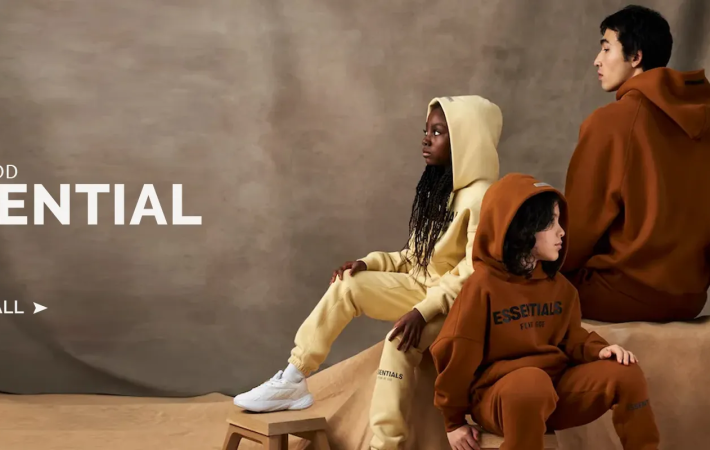In the late 1960s, a silent rebellion was brewing in Tokyo. It was a time when fashion was synonymous with elegance and beauty—predictable, glossy, and confined to the structures of tradition. Enter Comme Des Garçons, a brand that, from the very beginning, set out to subvert every fashion convention. The name itself—meaning “like boys” in French—signaled a deliberate intent to defy norms and challenge the rigidly gendered expectations of clothing. At its inception in 1969, Comme Des Garçons was more than a brand; it was a statement, a disruption of the status quo. This was no ordinary fashion house. It was a movement—quietly rebellious yet powerfully loud in its defiance.
Rei Kawakubo: The Visionary Behind the Revolution
Behind this monumental shift in the fashion landscape was the enigmatic figure, Rei Kawakubo. An iconoclast in every sense, Kawakubo never trained formally in fashion design. Perhaps that’s what allowed her the freedom to think beyond the conventional parameters of design. For Kawakubo, fashion wasn’t about mere aesthetics—it was a form of expression, an art that questioned, provoked, and often disoriented. Kawakubo’s vision was rooted in non-conformity. She rejected the pretty and the polished, instead embracing imperfections, asymmetry, and the rawness of human emotion. Through her work, Kawakubo dismantled the idea that fashion needed to be beautiful in the traditional sense. She offered something far more profound—fashion that made you feel something, even if that feeling was discomfort or confusion.
Disrupting the Fashion Norms: Comme Des Garçons’ Avant-Garde Aesthetic
When Comme Des Garçons debuted its collections in Paris in the early 1980s, the fashion world was left stunned. The stark contrast between Kawakubo’s radical designs and the luxurious, glamorous fashion of the time was unmistakable. Comme Des Garçons’ aesthetic was characterized by its monochrome color palette, often dominated by black, and the frequent use of oversized, shapeless garments. These designs weren’t about flattering the body or accentuating curves; they were about challenging the very idea of what clothing should be. Her creations evoked feelings of mystery, solitude, and even alienation. The critics called it “Hiroshima chic”—a reflection of its austere, almost post-apocalyptic aesthetic. But the revolution had begun.
Breaking Gender Boundaries: Unisex Designs that Redefined Style
Comme Des Garçons was among the first to actively challenge gender binaries in fashion. The early collections blurred the lines between masculine and feminine, with Kawakubo creating unisex pieces that neither adhered to traditional men’s nor women’s clothing. Her designs often featured boxy silhouettes, wide trousers, and oversized jackets that could be worn by anyone, regardless of gender. Kawakubo saw clothing not as a means to enforce gender norms but as a tool of liberation. This radical perspective redefined style, allowing individuals to express themselves beyond the constraints of gendered fashion.
The Radical Influence of Deconstruction in Fashion
One of the most influential contributions commedesgarconsjp.com made to the fashion world was the concept of deconstruction. Kawakubo took apart garments and reassembled them in unexpected ways, often leaving seams exposed, distorting traditional forms, and embracing imperfection. This technique was a metaphor for the way Kawakubo approached design—stripping away the polished veneer of fashion to reveal something raw, authentic, and intensely personal. Deconstruction wasn’t just a visual choice; it was a philosophical one. It suggested that beauty could be found in the unfinished, the broken, and the unconventional.
Comme Des Garçons’ Global Impact on High Fashion and Streetwear
The reach of Comme Des Garçons’ influence extends far beyond high fashion runways. Its daring approach has permeated global culture, particularly in the realm of streetwear. The brand’s collaborations with streetwear labels like Supreme, as well as its popular diffusion line Comme Des Garçons Play, have made its avant-garde aesthetic accessible to a broader audience. From high-end boutiques to urban streets, Comme Des Garçons has become a symbol of rebellion and individuality. Its heart emblem, often spotted on sneakers and tees, is more than just a logo; it’s a badge of non-conformity that resonates with a generation seeking authenticity.
Collaborations that Shaped a New Era in Fashion
Kawakubo has never shied away from collaboration, and through these partnerships, Comme Des Garçons has further solidified its position as a revolutionary force in fashion. Iconic collaborations with brands such as Nike, Converse, and even Louis Vuitton have brought a high-low fusion to the forefront of modern fashion. These partnerships have allowed Comme Des Garçons to maintain relevance across different audiences, from luxury fashion connoisseurs to sneaker enthusiasts. Each collaboration carries Kawakubo’s signature avant-garde touch, blending the worlds of art, fashion, and pop culture.
Legacy of Innovation: How Comme Des Garçons Continues to Inspire the Next Generation
Decades after its inception, Comme Des Garçons remains a beacon of innovation in fashion. Kawakubo’s influence can be seen in the work of many contemporary designers who push the boundaries of design, questioning the limitations of traditional fashion. Young designers today look to Comme Des Garçons not just for inspiration, but for permission—to experiment, to challenge, to innovate without fear. The brand’s legacy is one of relentless creativity and rebellion, encouraging every generation to embrace the power of disruption.
Comme Des Garçons didn’t just change fashion—it revolutionized the way we see and experience clothing. In a world that often prizes conformity, Kawakubo continues to remind us that true creativity is born from the courage to stand apart.







Leave a comment
Your email address will not be published. Required fields are marked *